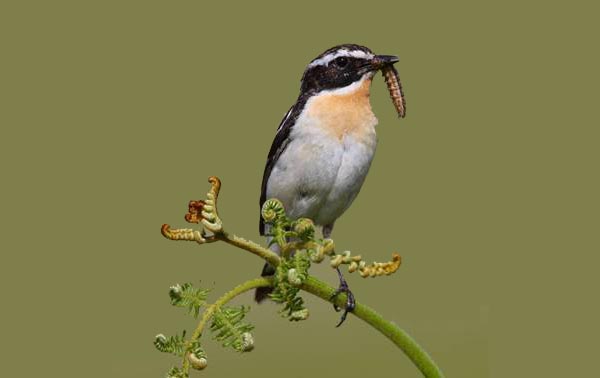How a chance meeting on the moor started a long-term research initiative.
The importance of long-term studies has been highlighted in previous BOU blogs, for example by Tim Birkhead and Malcolm Burgess. These long-term initiatives are often not planned, but result from the continuation of a short-term study or PhD project.
I am working on a relatively “young” long-term study, which has equally humble beginnings. On a spring day in 2008 Charles Tyler was photographing Cuckoos on Dartmoor, when he got disturbed by two men who turned out to be birders and nest recorders. Charles, a professor of environmental biology at the University of Exeter, and the nest recorders, Mark Lawrence and Mark Penney, connected over their shared passion for birds. They decided to team up and use their combined field skills and scientific knowledge to support the study and conservation of Dartmoor birds.
That year ‘Mark & Mark’ collected nest record data on 54 bird nests in the 2km square Dartmoor moorland area where they met Charles. The area became a study site, with a main focus on the breeding of common upland moorland birds: Meadow Pipits, Stonechats, Whinchats, Skylarks and Cuckoos. Between 2008 and now the group expanded with two new volunteer nest recorders and two PhD students (Lowell Mills, supported by the Natural Environment Research Council and the RSPB, and I). The Dartmoor Upland Bird Nest Group, and a new long-term study, was born (or should I say “hatched”).
The main aim of our group is to build a better understanding of the breeding ecology of ground-nesting birds and Cuckoos and relationships with habitat, food availability and land management. Collectively, we monitor timing of breeding, growth rates and breeding success. My PhD work centres around Meadow Pipits, Stonechats and Whinchats, with the aim of understanding their breeding habitat requirements and potential conflicts with land management practices. Lowell’s PhD focuses on the diet, foraging and habitat use of the Cuckoo and its Meadow Pipit host.

Over the past eight years, our new ‘long-term’ study has collected data on more than 1300 nests of more than 30 species, all nestlings are ringed, and nest records are submitted to the BTO’s Nest Record Scheme. Our findings are shared with the Dartmoor National Park Authority, and our first journal manuscripts are in preparation.
Nest finding and monitoring is a job that takes an incredible amount of time and field skills that cannot be acquired over the course of one spring or PhD project. None of our group’s research would be possible without the incredibly dedicated and knowledgeable volunteers that were the foundation of this project. Skilled birders and nest recorders are fundamental to ornithological research, and the long-term studies that they help facilitate are crucial for building true understanding on bird population biology.

Plans for the future
The value of our project is increasing with each additional year of data. We are now starting to get information on fluctuations in factors such as onset of breeding and breeding success, and are building up a valuable database of breeding information on the upland bird community. We want to both continue nest recording and also broaden our fieldwork to start to address other important research questions. If funding allows, our next step will be to make use of our nestling ringing work by capturing adults to study demography, survival and recruitment.
Crowdfunding our project
With funding hard to come by, I am following Tim Birkhead’s example by crowdfunding for our project. I am hoping to raise £6,000 to help cover our volunteers’ contribution (e.g. cost of rings, equipment) for the 2016 season. Please find out more on our crowdfunding website. Any help would be greatly appreciated.
Further reading
Crowdfunding website View
Dartmoor Upland Bird Nest Group website View
The BTO Nest Record Scheme View
Dartmoor National Park Authority View
Image credit
Featured image: Whinchat © Charles Tyler.
If you want to write about your research in #theBOUblog, then please see here.





